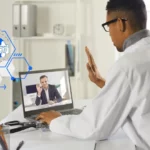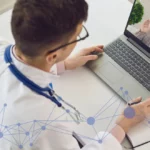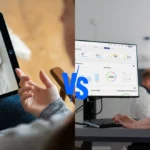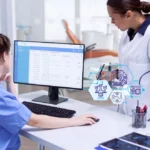Top Remote Patient & Therapeutic Monitoring Software Solutions
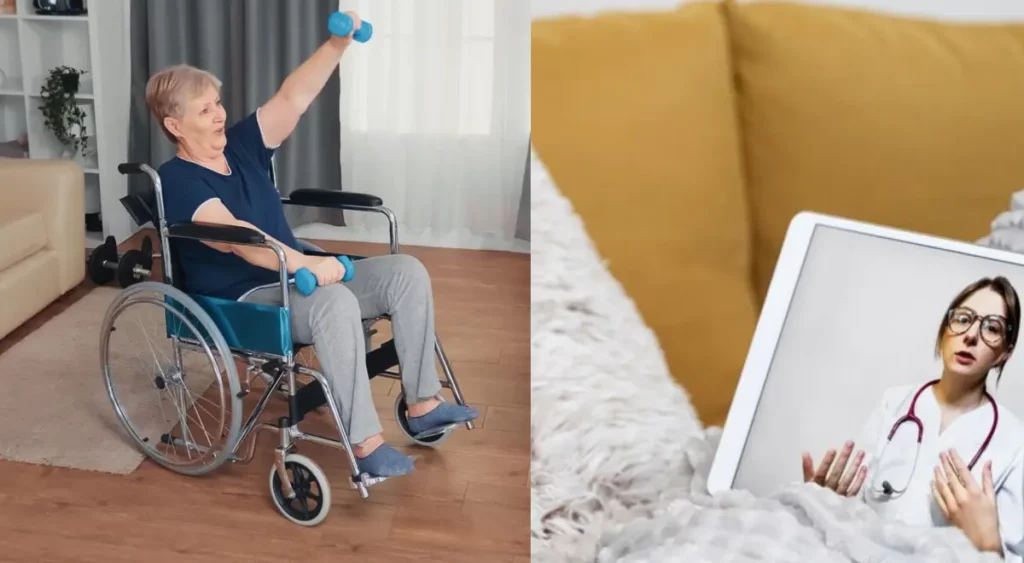
Remote Therapeutic Monitoring (RTM) is reshaping how providers support patients with musculoskeletal, respiratory, and rehabilitation needs. With CMS-approved CPT codes and growing demand for therapy adherence, RTM software helps providers track progress, improve outcomes, and streamline billing.
The rise of Remote Patient Monitoring (RPM) and Remote Therapeutic Monitoring (RTM) has really changed the way medical professionals deliver healthcare services to patients. Both these technologically advanced platforms allow healthcare providers to monitor patient health remotely using connected remote monitoring devices and cloud-based platforms that collect, analyze and share data. Using this data or health records, healthcare staff provides personalized treatment plans and timely intervention, without having the patients to pay an in-clinic visit.
There are many remote care companies in the United States that are working to provide comprehensive healthcare solutions to chronic patients that require consistent care and monitoring to avoid emergency visits and hospitalizations. Though the majority of them are dedicated to remote patient monitoring, there are a few that cover several remote care programs, including chronic care management, remote therapeutic monitoring, and transitional care management.
In this article, we’ll take you through the top remote patient and therapeutic monitoring software providers delivering services in the United States.
Table of Contents
Toggle1. HealthArc
HealthArc is one of the top remote patient and therapeutic monitoring companies providing secure and compliant software that covers multiple remote care programs, including RPM, CCM, TCM, RTM, PCM, and BHI. This platform is popular for its focus on assisting healthcare providers in managing chronically ill patients while ensuring high reimbursements and accurate billing at the same time. Its integration with AI-powered analytics helps healthcare providers in making data-driven decisions.
HealthArc’s RPM platform is designed to help both providers and patients with real-time health tracking and timely interventions. This not only improves patient engagement, but also boosts health outcomes for patients dealing with chronic conditions like diabetes, hypertension, and COPD (Chronic Obstructive Pulmonary Disease). Not only this, they provide cellular remote patient monitoring devices to help patients become self-engaged. HealthArc seamlessly integrates with 55+ EHRs for better efficiency and reimbursements.
Some key features of HealthArc include:
- Real-time data analysis and patient monitoring
- Integration with over 55 EHRs and various medical devices
- Support for multiple conditions and enhanced clinical decision support
- High standards of privacy and data security
- Tracks key health metrics such as blood sugar levels, blood pressure, and weight
- Identify trends and alert healthcare providers when intervention is needed
- Allows for continuous health data collection
- Ability to communicate seamlessly via messaging, video calls, and appointment scheduling
2. Teladoc Health
Teladoc Health is a pioneer in remote patient monitoring platform services and specializes in monitoring and managing chronic conditions, including diabetes, hypertension, and mental health. With a focus on patient engagement, Teladoc Health offers connected devices and personalized coaching to improve patient outcomes. Just like HealthArc, it provides patients with an access to connected devices to track and record their vitals, making it one of the most widely adopted remote monitoring solutions in the United States.
Some key features of Teladoc Health include:
- Connected devices for health monitoring
- One-on-one support from health coaches
- Uses data analytics to identify patterns and trends
- Alert patients and providers when readings are abnormal
- Seamless integration with telehealth services
- Comprehensive health monitoring
- Focuses on holistic care, including physical and mental health
- Access to resources for managing stress, anxiety, and depression
- Hassle-free communication and timely intervention
3. Oracle Health
Oracle Health, formerly Cerner, is one of the popular health technology companies providing remote patient monitoring and remote therapeutic monitoring solutions, as an extension of its comprehensive Electronic Health Record (EHR) systems. Oracle Health’s RPM platform allows healthcare providers to track, monitor, and manage chronic conditions for patients without having them to pay an in-clinic visit, thereby enhancing convenience, patient care, and reduced readmission rate.
What makes Oracle Health unique is its extensive experience in the healthcare industry and its seamless integration with EHR systems that helps healthcare providers looking to implement a hassle-free remote patient monitoring and remote therapeutic monitoring program. Its ability to collect real-time data and use predictive analytics gives it an edge in improving patient care.
Some key features of Oracle Health include:
- Integrates seamlessly with EHR platforms
- Provides a holistic view of the patient’s health
- Monitor a wide range of chronic conditions
- Real time data collection and alerts
- Proactive intervention and reduces the risk of complications
- Medication reminders, education materials, and lifestyle management guidance
- Uses advanced analytics to predict potential health issues
- Better management of chronic diseases
4. VitalConnect
VitalConnect is a wearable health monitoring system designed to track a patient’s vital signs in real time. The company specializes in post-acute care and hospital discharge management. It is focused on offering a non-invasive solution for post-acute care. VitalConnect’s ability to remotely monitor vital signs in real time makes it a trusted RPM and RTM platform for healthcare professionals to treat patients in a remote setting or at-home environments. It works using non-invasive internal sensors to provide comprehensive health reports making it an ideal choice for keeping a check on patients, around the clock.
Some key features of VitalConnect include:
- Wearable sensors for vital signs
- Real-time data for prompt intervention
- Cloud-based data analytics
- Post discharge monitoring for recovery
Key Takeaways
- RTM focuses on monitoring therapy adherence and non-physiological data.
- Providers benefit from engaged patients, better outcomes, and new revenue streams.
- CPT codes 98975, 98976, 98977, 98980, 98981 support Medicare billing for RTM.
- Unified platforms like HealthArc simplify multi-program management.
Conclusion
Both remote patient monitoring and remote therapeutic monitoring are taking remote healthcare a level ahead by delivering consistent and personalized care while reducing costs and improving patient outcomes.
HealthArc.io stands out as a leader in the remote healthcare industry with its AI-powered advanced data analytics, seamless integration, audio/video functionality, and HIPAA and SOC2 compliant software. With a patient-centered platform that offers compatibility for comprehensive healthcare programs, better monitoring, and improved outcomes, HealthArc’s RPM and RTM software is proudly shaping the future of remote patient care.
Schedule a demo today to find out how our platform works or call us today at (201) 885 5571 to create a personalized RPM and RTM solution for your organization.
Frequently Asked Questions (FAQs)
RTM is a CMS-approved application that lets doctors keep an eye on and manage therapy-related patient data from afar, like pain scores, medication use, and how well patients are following their treatment plans.
RPM keeps track of physiological data like blood pressure, glucose, and oxygen, while RTM keeps track of therapeutic and non-physiological data like how well the body is healing, how much pain someone is in, or how often they use an inhaler.
CPT codes 98975 (setup), 98976 & 98977 (supply of devices), and 98980 & 98981 (treatment management) are used for RTM billing.
It collects patient data automatically, makes it easier for patients to follow through on their treatment, allows for proactive interventions, and makes sure that invoicing is done correctly with less work for the staff.
HealthArc blends RTM with RPM and CCM, giving physicians one dashboard to easily manage all of their chronic and therapeutic monitoring programs.
Most Recent Blogs
Categories
Related Blog
- September 4, 2025 | Read Time: 11 mins
How CMS 2026 Medicare Proposed Rules will affect Telehealth & RPM
The CMS 2026 Medicare Physician Fee Schedule proposed rule could be the...
Learn More- August 16, 2025 | Read Time: 14 mins
Find the Best Remote Care Platform in 2026: HealthArc vs Competitors
For small practices and care providers, remote care solutions are highly effective...
Learn More- August 14, 2025 | Read Time: 15 mins
CMS 2026 Proposed Rule Simplifies RPM: What Providers Need to Know
To promote remote care, the Centers for Medicare & Medicaid Services (CMS)...
Learn More